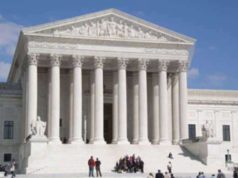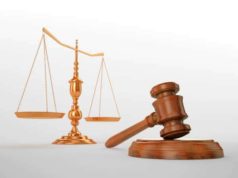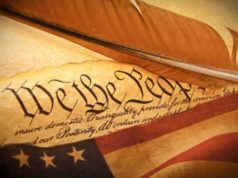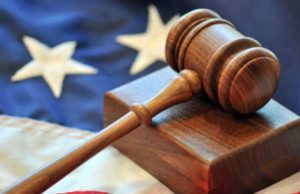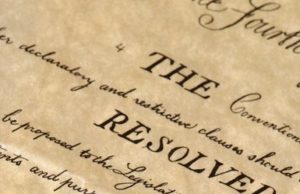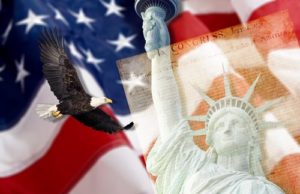
The U.S. Constitution is the cornerstone of American democracy. It outlines the powers and limitations of the federal government while also protecting the rights of citizens. Understanding the function of the Constitution is critical to comprehending the American political system. Here are a few things to know about how the Constitution works.
First, the Constitution provides the framework for the federal government. It outlines the branches of government and their respective powers. The legislative branch is responsible for making laws, the executive branch is responsible for enforcing them, and the judicial branch interprets them. There are checks and balances in place to ensure that no one branch of government becomes too powerful.
Second, the Constitution establishes the separation of powers. The founding fathers believed that separating the powers of government would reduce the likelihood of tyranny and ensure that the rights of individuals were protected. The separation of powers also prevents one branch of government from encroaching on the powers of another. This separation helps to promote accountability and transparency in government.
Third, the Constitution protects individual rights. The Bill of Rights, which consists of the first ten amendments to the Constitution, guarantees rights such as freedom of speech, religion, and the press. It also establishes protections against unreasonable search and seizure, self-incrimination, and cruel and unusual punishment. These protections ensure that the government cannot infringe upon the individual rights of citizens.
Fourth, the Constitution can be amended. The Constitution has been amended 27 times, with the first ten amendments being ratified in 1791. Amendments are proposed by Congress or by a convention called for by two-thirds of the state legislatures. Amendments must be ratified by three-fourths of the states before they can become part of the Constitution.
Finally, the Constitution is the supreme law of the land. This means that federal and state laws must be in compliance with the Constitution. If a law is found to be unconstitutional, it can be struck down by the judiciary.
In conclusion, understanding the function of the Constitution is vital to understanding the American political system. It outlines the framework of the federal government, the separation of powers, individual rights, the amendment process, and the supremacy of the Constitution. By providing a clear understanding of these concepts, citizens can engage in educated discussions about the issues facing our nation.
The place of the United States Constitution owes its existence in part to the precedent of previous forms of Constitutional law created throughout human history. In this sense, a constitution may be essentially considered a statement giving the basic shape of a political structure for organizing multiple numbers of people, as pertains to the powers it can exercise and those it cannot.
The constitution concept can be and has been used for different kinds of organizations, but the use most associated with the term is that comprising the overall political organization of a nation. Toward this end, a constitution will refer to both the abstract political principles cited as justifications for the exercise of power, as the United States Constitution refers to basic human liberties, and to specific procedures and forms for achieving these ideals.
The first constitution which can be understood as such is currently dated back to the year 2300 BCE based on evidence uncovered by an Iraqi archaeological dig. The first Roman constitution was created in 449 BCE, as the so-called Twelve Tables. It was only completely replaced many centuries later by the Code of Theodore in 438 BCE. In 621, the first constitution of Athens was created by a clerk named Draco, to be replaced in 594 by the less restrictive, or “draconian”, Solonian Constitution. In a further move toward liberalization of Athenian law, the ruler Cleisthenes had a new law created in 508 BCE inaugurating democracy.
After constitutions spread across the governments of Greek city-states in the next few centuries, the philosopher Aristotle addressed their use and theory in his writing. Following the collapse of Roman imperial power in Europe, many of the Romans’ former subjects created their own codes of law. In the Middle East, the Constitution of Medina was created in 1622 by the prophet Muhammad. An early Asian constitution was created in 1604 as the “Seventeen-article constitution” of Japan.
The first equivalent to the European conception of the constitution was implemented in North America, though not in written form, around the 11th and 12th centuries for the use of the Iroquois Nation. North America’s first “true” constitution in the sense of fully satisfying Europe’s requirements was implemented in 1639 as the Fundamental Orders of the Colony of Connecticut. The earliest constitution to satisfy modern understandings of the term was created but never implemented in the Agreements and Constitutions of Laws and Freedoms of the Zaporizian Host in 1710 for a small republic that never came to pass.
The oldest constitution which still exists today is the Leges Statutae Republicae Sancti Marini, created for San Marino in 1600. The rights expected to be secured by a modern constitution were created in part by the English Magna Carta, although, except for brief intervals, the country went without a formal constitution. The modern model for what a constitution should accomplish comes from the Constitution of the United States, which influenced many of the subsequent reforms and revolutions in Europe.








